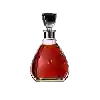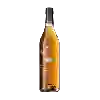
Winery 3 Ans d'AgeBanyuls Traditionnel Doux Naturel
This wine generally goes well with beef and mature and hard cheese.
Food and wine pairings with Banyuls Traditionnel Doux Naturel
Pairings that work perfectly with Banyuls Traditionnel Doux Naturel
Original food and wine pairings with Banyuls Traditionnel Doux Naturel
The Banyuls Traditionnel Doux Naturel of Winery 3 Ans d'Age matches generally quite well with dishes of beef or mature and hard cheese such as recipes of pork tongue with tomato sauce and pickles or 3 men pizza with ravioli.
Details and technical informations about Winery 3 Ans d'Age's Banyuls Traditionnel Doux Naturel.
Discover the grape variety: Heroldrebe
Intraspecific crossing obtained in Germany in 1929 by August Karl Herold (1902-1973) between the blue Portuguese and the limberger. This variety can still be found in Germany, South Africa, etc. In France, it is practically unknown.
Last vintages of this wine
The best vintages of Banyuls Traditionnel Doux Naturel from Winery 3 Ans d'Age are 2008
Informations about the Winery 3 Ans d'Age
The Winery 3 Ans d'Age is one of of the world's greatest estates. It offers 2 wines for sale in the of Banyuls to come and discover on site or to buy online.
The wine region of Banyuls
Banyuls wines come from the South-eastern Part of Roussillon, in the south of France, in the lower Pyrenees, a few kilometres from the Spanish border. These naturally Sweet wines are consumed both as an aperitif and as a dessert. They come in a wide range of hues, from GoldenGreen (Banyuls Blanc) to Amber (Banyuls Ambré) to the intense garnet of the standard Banyuls Rouge. Unusually among the natural sweet wines of France, all Banyuls wines are made primarily from Grenache grapes of various colors.
The wine region of Languedoc-Roussillon
Languedoc (formerly Coteaux du Languedoc) is a key appellation used in the Languedoc-Roussillon wine region of southern France. It covers Dry table wines of all three colors (red, white and rosé) from the entire region, but leaves Sweet and Sparkling wines to other more specialized appellations. About 75% of all Languedoc wines are red, with the remaining 25% split roughly down the middle between whites and rosés. The appellation covers most of the Languedoc region and almost a third of all the vineyards in France.
The word of the wine: Sabrer (champagne)
A cavalier and folkloric way of opening a bottle of champagne by breaking the neck with a sharp blow given with the top of the blade of a sabre.










